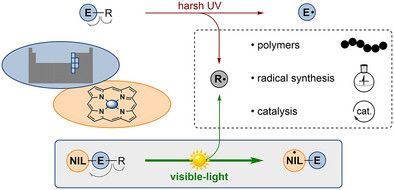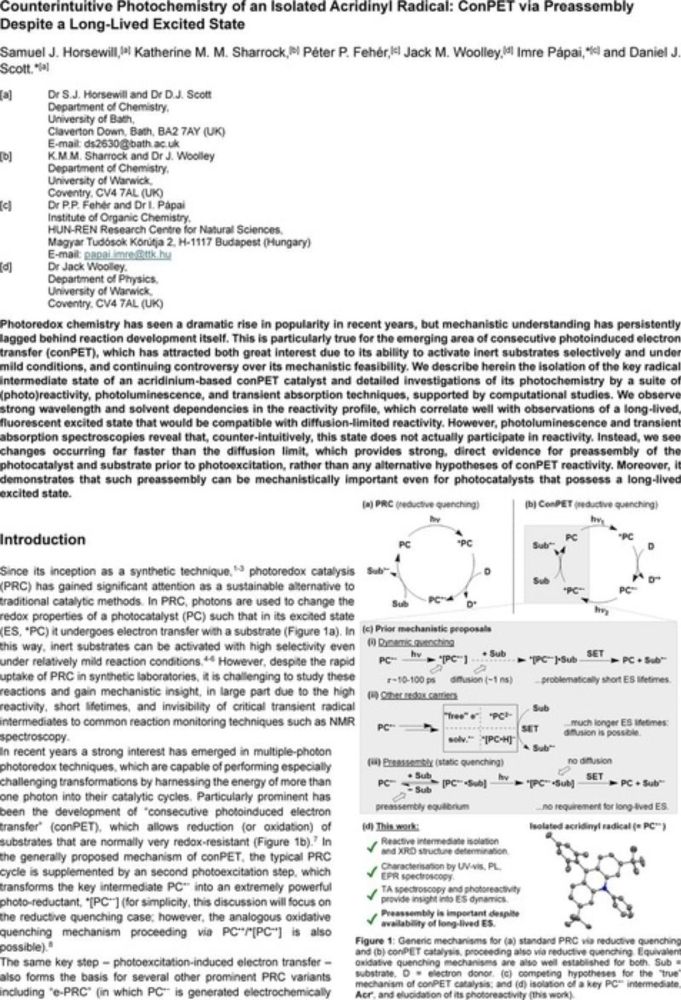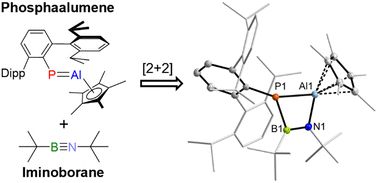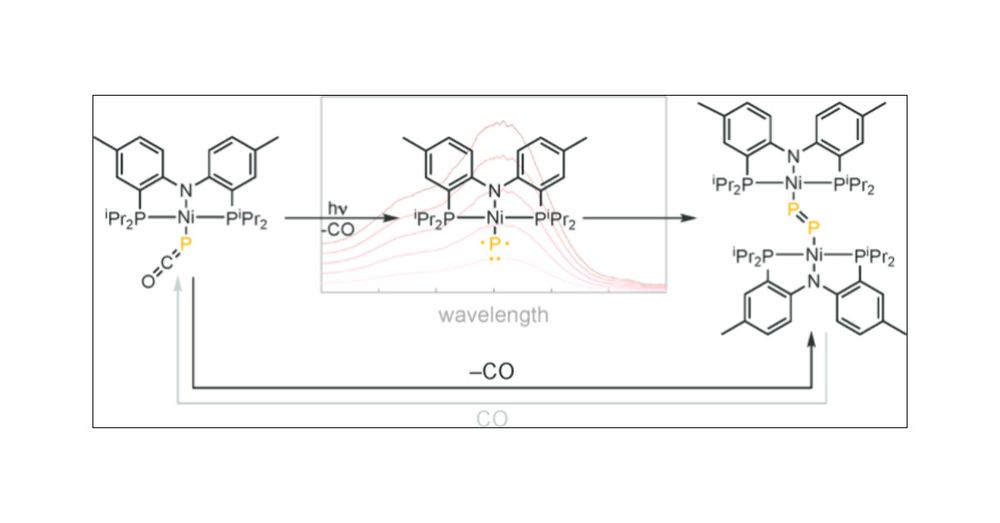Posts
Media
Videos
Starter Packs
Reposted
ChemComm
@chemcomm.rsc.org
· Aug 7

One-pot synthesis of primary phosphines from white phosphorus
Aryl and alkyl chlorides are inexpensive and readily accessible, making them ideal reagents for converting white phosphorus (P4) into primary phosphines RPH2. However, methods for achieving this…
buff.ly
Reposted
Gunnar Werncke
@wernckelab.bsky.social
· Jul 16
Linear Open-Shell 3d-Metal Silylamides – A Versatile Tool in Coordination Chemistry
Linear 3d-metal complexes with open-shell metal ions have fascinated coordination chemists for decades. Originally the focus lied on metal(II) species, yet the synthetic possibilities to acquire their...
pubs.rsc.org
wolflab.bsky.social
@wolflab.bsky.social
· Jul 11
wolflab.bsky.social
@wolflab.bsky.social
· Mar 28
Reposted
wolflab.bsky.social
@wolflab.bsky.social
· Feb 12
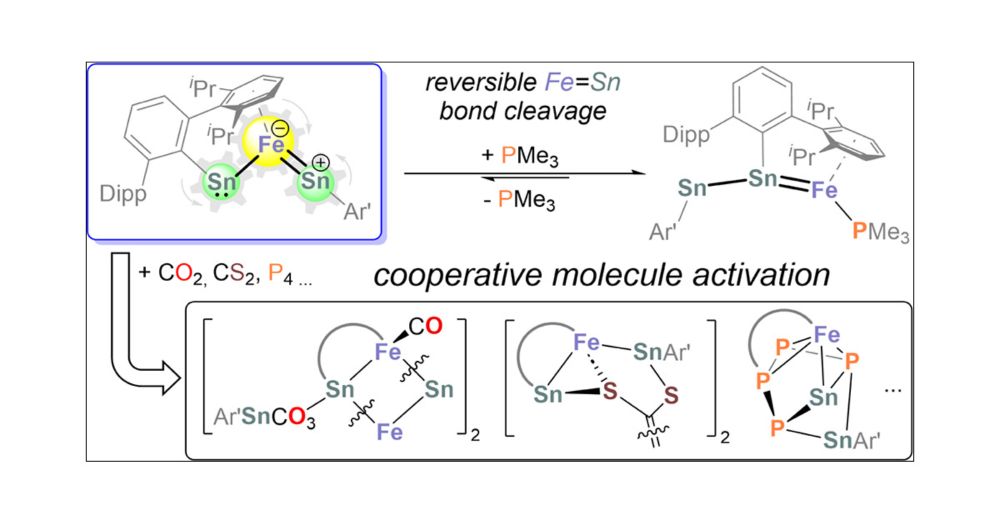
Synthesis and Reactivity of an Iron–Tin Complex with Adjacent Stannylidyne and Ferriostannylene Units
Heavier transition metal carbyne analogs hold significant potential for cooperative activation of small molecules. However, complexes containing more than one heavier tetrylidyne ligand RE (E = Si, Ge...
pubs.acs.org
wolflab.bsky.social
@wolflab.bsky.social
· Jan 30
wolflab.bsky.social
@wolflab.bsky.social
· Jan 30
Reposted
Schneider Lab
@schneider-lab.bsky.social
· Jan 29
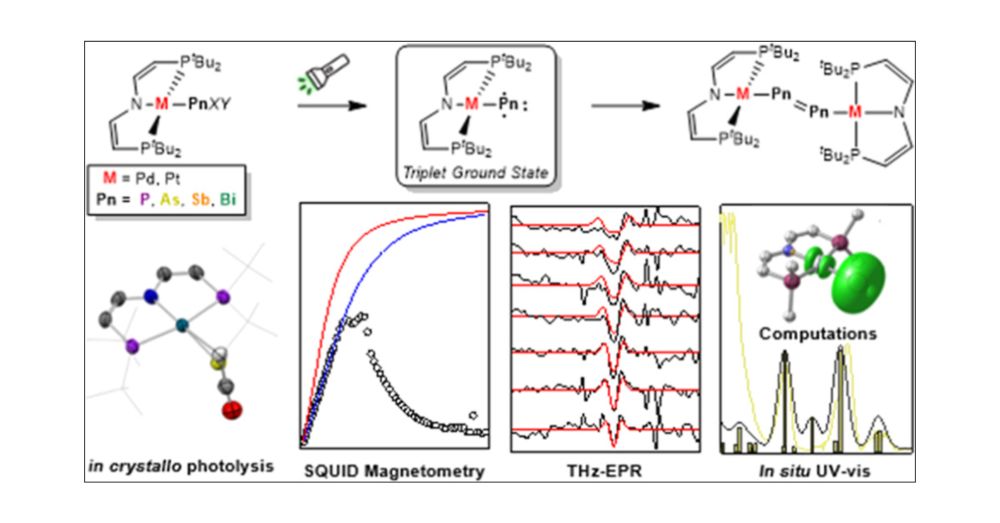
Transient Triplet Metallopnictinidenes M–Pn (M = PdII, PtII; Pn = P, As, Sb): Characterization and Dimerization
Nitrenes (R–N) have been subject to a large body of experimental and theoretical studies. The fundamental reactivity of this important class of transient intermediates has been attributed to their electronic structures, particularly the accessibility of triplet vs singlet states. In contrast, electronic structure trends along the heavier pnictinidene analogues (R–Pn; Pn = P–Bi) are much less systematically explored. We here report the synthesis of a series of metallodipnictenes, {M–Pn═Pn–M} (M = PdII, PtII; Pn = P, As, Sb, Bi) and the characterization of the transient metallopnictinidene intermediates, {M–Pn} for Pn = P, As, Sb. Structural, spectroscopic, and computational analysis revealed spin triplet ground states for the metallopnictinidenes with characteristic electronic structure trends along the series. In comparison to the nitrene, the heavier pnictinidenes exhibit lower-lying ground state SOMOs and singlet excited states, thus suggesting increased electrophilic reactivity. Furthermore, the splitting of the triplet magnetic microstates is beyond the phosphinidenes {M–P} dominated by heavy pnictogen atom induced spin–orbit coupling.
pubs.acs.org
wolflab.bsky.social
@wolflab.bsky.social
· Jan 29
wolflab.bsky.social
@wolflab.bsky.social
· Jan 29
wolflab.bsky.social
@wolflab.bsky.social
· Jan 29
Reposted

